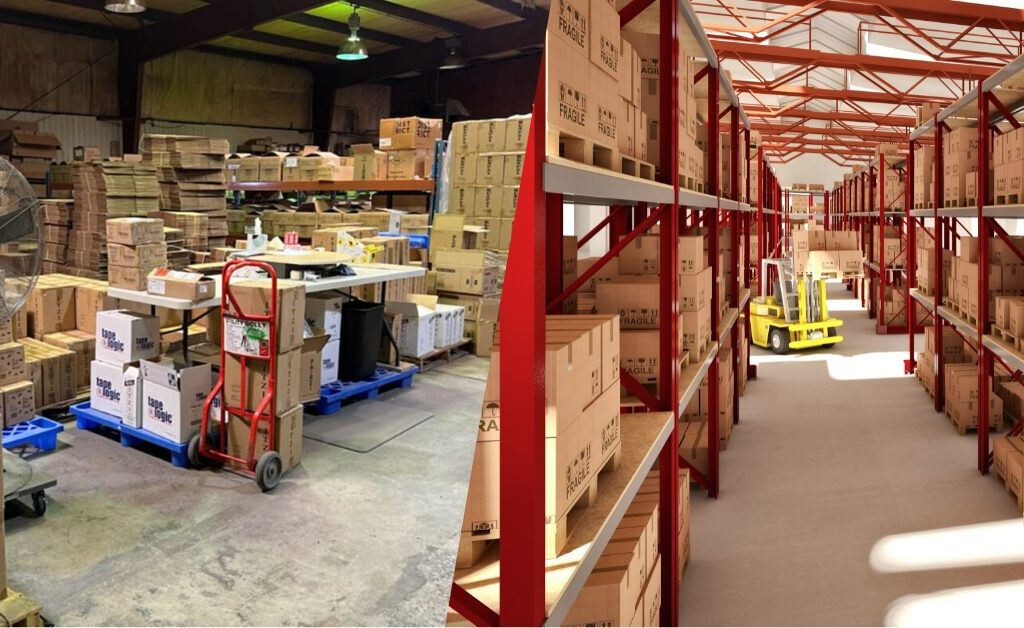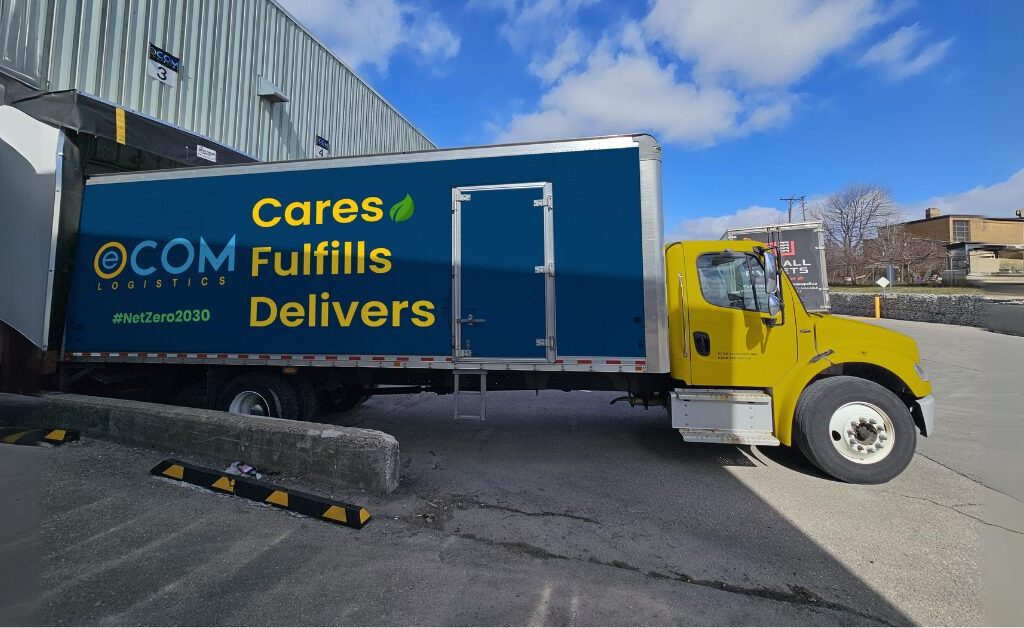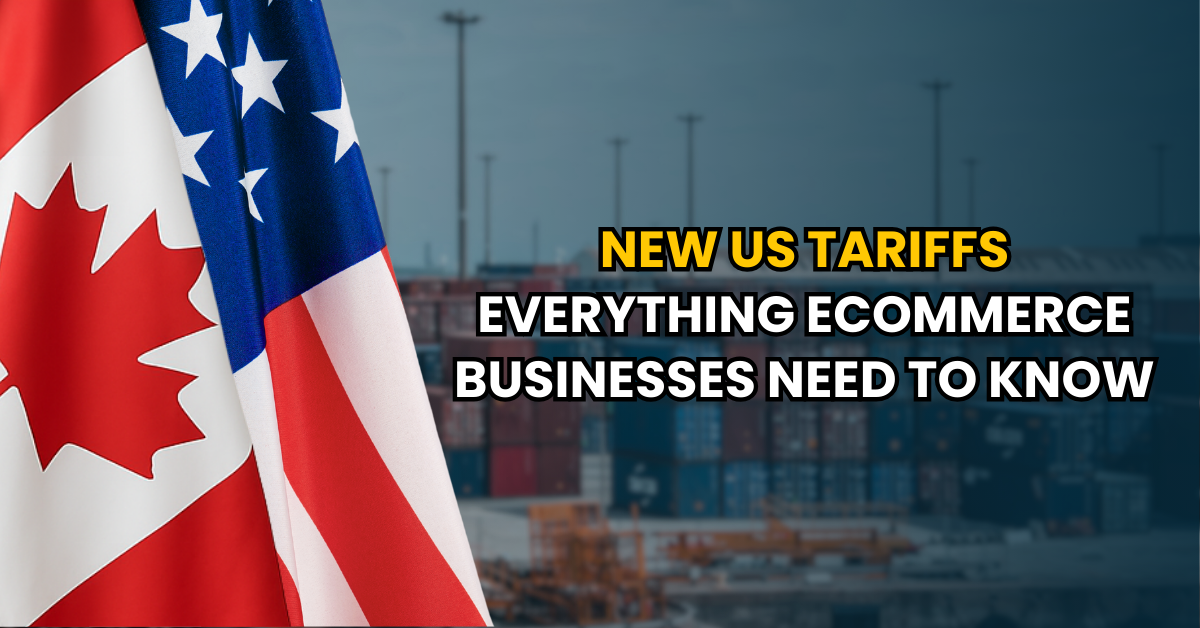In the world of e-commerce, efficient order fulfillment is the backbone of customer satisfaction. As your business expands, a crucial decision looms: should you manage your ecommerce fulfillment in-house, or outsource it to a third-party logistics (3PL) provider? The choice you make can profoundly impact your operational costs, scalability, and overall customer experience.
Picture this: your ecommerce business is thriving, with orders flooding in from across Canada. The pressure to deliver products on time and in perfect condition is mounting. Do you have the infrastructure, expertise, and resources to manage the increasing workload? Or would it be more strategic to partner with an ecommerce fulfillment specialist who can streamline the process and ensure timely deliveries?
To answer these questions, it’s essential to explore the advantages and disadvantages of both in-house and outsourced fulfillment. This blog will provide the insights you need to make an informed decision that aligns with your business goals and resources.
Understanding in-house fulfillment
In-house fulfillment means taking complete control of the order fulfillment process within your organization. From storing products in your warehouse to carefully packing and shipping them directly to customers, you handle every aspect.
Key components of in-house fulfillment:
- Warehousing: Owning or leasing a storage space to house your inventory.
- Inventory management: Tracking stock levels, product locations, and expiration dates.
- Order processing: Picking, packing, and labeling products for shipping.
- Shipping: Coordinating with carriers to ensure timely delivery.
- Returns handling: Managing customer returns, exchanges, and refunds.
- Customer service: Providing direct support related to orders, shipping, and returns.
Who typically uses in-house fulfillment?
In-house fulfillment may be suitable for businesses that:
- Have a relatively small order volume.
- Prioritize branding consistency and operational control.
- Have the necessary resources and expertise to manage ecommerce fulfillment effectively.
- Are willing to invest in the necessary infrastructure and personnel.

Key advantages of in-house fulfillment
1. Full control over operations
When you handle your ecommerce fulfillment in-house, you have complete autonomy over every aspect of the process.
- Inventory management: You can precisely track your stock levels, minimizing the risk of stockouts or excess inventory.
- Packaging: Customize packaging to align with your brand and protect your products.
- Customer service: Provide personalized and responsive support, directly managing customer inquiries and complaints.
2. Branding consistency
In-house fulfillment gives you the opportunity to create a consistent brand experience throughout the customer journey.
- Custom packaging: Design packaging that reflects your brand’s values, aesthetics, and messaging.
- Branded shipping materials: Reinforce your brand identity with branded labels, boxes, and packing materials.
- Personalized messages: Include personalized messages or promotional materials in your packages to enhance customer engagement and loyalty.
3. Flexibility
In-house ecommerce fulfillment offers businesses the ability to adapt quickly to changing market conditions and customer demands.
- Inventory adjustments: Easily adjust inventory levels based on sales trends, seasonal fluctuations, or unexpected events.
- Product launches: Quickly introduce new products to your inventory and ensure they are available for sale.
- Customer preferences: Adapt your ecommerce fulfillment processes in response to customer feedback.
4. Enhanced data insights
By managing ecommerce fulfillment in-house, you can gather valuable data that can be used to optimize your operations and improve decision-making.
- Inventory performance: Track product sales, turnover rates, and stockouts to identify areas for improvement.
- Customer behavior: Analyze customer data to understand purchasing patterns, return rates, and customer preferences.
- Shipping performance: Monitor delivery times and customer satisfaction to evaluate logistics effectiveness.
5. Strategic alignment
In-house fulfillment can be closely aligned with your company’s overall business strategy.
- Customer experience: Tailor your ecommerce fulfillment processes to deliver a superior customer experience.
- Market responsiveness: Quickly adapt to market changes, such as new product launches or market expansions.
- Competitive advantage: Optimize your fulfillment operations to differentiate your business from competitors.
Common challenges of in-house fulfillment
- High operational costs: In-house fulfillment requires significant investments in warehousing, equipment, staffing, and technology. These costs can be substantial, especially for businesses with growing order volumes.
- Scalability issues: During peak seasons or periods of rapid growth, in-house fulfillment can become overwhelmed, leading to delays in order processing and shipping.
- Logistics complexities: Managing shipping, returns, and inventory can be complex and time-consuming, requiring dedicated resources and expertise.
- Limited expertise: In-house teams may lack the specialized knowledge and experience needed to handle all aspects of ecommerce fulfillment effectively, potentially leading to inefficiencies and errors.
- Increased risk: In-house operations are more vulnerable to disruptions, such as natural disasters or labor shortages.
- Hidden costs: Additional costs may arise from inventory shrinkage, damaged goods, and inefficient processes.
- Regulatory compliance: Compliance with warehousing, transportation, and product safety regulations can be complex and time-consuming.
- Human error: Reliance on human workers increases the risk of errors, leading to customer dissatisfaction.
- Technological challenges: Maintaining necessary technology, such as warehouse management systems, can be costly and time-consuming.
- Labor shortages: Finding and retaining qualified warehouse staff can be challenging, especially in tight labor markets.
The case for outsourcing fulfillment
Outsourcing fulfillment involves entrusting the responsibility of managing your orders to third-party logistics (3PL) providers. They handle the entire ecommerce fulfillment process, from storing your products to packing and shipping them to your customers.
Key aspects of outsourced fulfillment:
- Warehousing: The fulfillment centers provide storage space for your inventory, ensuring it’s organized and accessible.
- Picking and packing: When an order is placed, the 3PL companies pick and pack the items according to your instructions.
- Shipping: The 3PL partners coordinate with carriers to ensure timely and secure delivery.
- Returns management: The 3PL providers handle returns and exchanges, reducing the administrative burden on your business.
Who typically uses outsourced fulfillment?
Outsourcing may be the best option for businesses that:
- Experience significant fluctuations in order volume.
- Lack of infrastructure or expertise to manage ecommerce fulfillment in-house.
- Want to focus on core competencies and reduce operational costs.
- Need to expand into new markets or reach global customers.
- Desire access to advanced technology and logistics expertise.

Key advantages of outsourcing fulfillment
1. Cost-effectiveness:
- Economies of scale: 3PL companies can offer better rates for warehousing, transportation, and labor due to their larger volume.
- Reduced overhead costs: Businesses avoid significant investments in infrastructure, equipment, and staffing.
- Technology utilization: Fulfillment centers often employ advanced technology like inventory management systems to streamline processes and minimize errors, leading to cost savings.
2. Scalability and flexibility:
- Peak season management: 3PLs handle fluctuating demand efficiently, ensuring smooth operations during busy periods.
- Seasonal adjustments: Businesses can scale operations up or down as needed, avoiding unnecessary costs.
- Rapid market response: 3PL companies quickly adapt to changes in customer demand or product offerings.
3. Access to expertise:
- Logistics optimization: 3PLs bring deep knowledge of logistics best practices to optimize your processes.
- Supply chain management: 3PLs provide expertise in managing the entire supply chain, from procurement to delivery.
- Industry-specific knowledge: Specialized 3PLs offer tailored solutions for specific industries.
4. Focus on core business:
- Resource allocation: Businesses can focus on their core competencies, such as product development and marketing.
- Improved efficiency: Outsourcing frees up internal resources, allowing businesses to focus on high-value activities.
- Enhanced customer experience: By focusing on core business, businesses can improve customer service and satisfaction.
5. Technological integration:
- Real-time visibility: 3PLs use advanced technology like transportation and warehouse management systems (TMS and WMS).
- Data-driven decisions: These tools provide valuable insights to help businesses make informed decisions.
- Increased efficiency: Automation and technology reduce errors and streamline processes.
Common challenges of outsourcing fulfillment
- Communication and coordination: Effective communication between the business and 3PL is essential to ensure a smooth ecommerce fulfillment process.
- Inventory management: Businesses may need to adapt to the 3PL’s inventory management systems and processes.
- Service Level Agreements (SLAs): Clear SLAs must outline expectations for performance, turnaround times, and quality.
- Data security and privacy: Businesses should evaluate the 3PL’s data security practices to protect sensitive information.
- Contractual terms: Contracts should clearly define the scope of services, pricing, and dispute resolution mechanisms.
By addressing these potential challenges proactively, businesses can maximize the benefits of outsourcing order fulfillment while minimizing risks.
Comparing in-house vs. outsourcing fulfillment
Let’s break down the key differences so you can identify which approach is the best fit for your business.
Cost analysis
1. Breakdown of costs
In-house fulfillment involves costs for warehousing, labor, technology, and shipping. Outsourcing typically includes rental fees and variable costs based on order volume.
| Cost factor | In-house fulfillment | Outsourced fulfillment |
|---|---|---|
| Warehousing | Investment in space, equipment, utilities | Rental fees, variable costs based on storage |
| Labor | Hiring and managing warehouse staff | Fees based on order volume or fulfillment services |
| Technology | Investment in WMS, order processing software, shipping systems | Seamless technological integration through 3PLs’ diverse options |
| Shipping Costs | High shipping costs due to limited access to carrier options | Get comparatively lower shipping costs owing to 3PLs’ pre-negotiated carrier rates |
2. Long-term financial implications
As a business grows, in-house fulfillment may become more cost-effective. However, outsourcing can offer flexibility and scalability, making it more cost-efficient for smaller or fluctuating operations.
Impact on customer experience
- In-House Fulfillment: Allows for personalized service, brand consistency, and direct control over the customer experience but can lead to delays during peak periods.
- Outsourcing: 3PLs can handle large volumes and offer expertise in logistics, potentially improving delivery times and customer satisfaction. 3PL companies like Ecom Logistics offer tailored services to meet your brand’s requirements so that you can offer personalized services to your customers as well.
Scalability
- In-House Fulfillment: May struggle to scale during peak periods or rapid growth, leading to inefficiencies.
- Outsourcing: Fulfillment centers offer scalable solutions that can grow with your business, reducing the risk of bottlenecks.
Flexibility
- In-House Fulfillment: Offers more flexibility in terms of product customization and packaging but may require significant investment in technology and infrastructure.
- Outsourcing: Provides flexibility in terms of scaling operations and reaching new markets but may limit customization options.
Risk Management
- In-House Fulfillment: Businesses retain full control over risk management but may lack the expertise to handle complex logistics challenges.
- Outsourcing: Fulfillment centers bring expertise in managing risks such as supply chain disruptions, but businesses must rely on the 3PL’s performance.

Making the right choice
The decision to manage ecommerce fulfillment in-house or outsource it depends on your business’s unique needs and goals. Consider the following:
1. Assess your business needs
- Order volume: Evaluate your current and projected order volume to determine the best ecommerce fulfillment strategy. A high volume might favor outsourcing to leverage economies of scale.
- Budget: Compare the costs of in-house fulfillment versus outsourcing to see which option is more cost-effective.
- Customer expectations: Consider how each option will impact your ability to meet customer expectations.
2. Evaluate your resources
- Infrastructure: Do you have the necessary warehousing and technology in place for in-house fulfillment?
- Staffing: Can you hire and train the right team to manage ecommerce fulfillment internally?
- Expertise: Do you have the knowledge and experience needed to handle logistics effectively?
3. Analyze your growth potential
- Scalability: Can your in-house fulfillment process scale with your business’s growth?
- Market expansion: Will outsourcing allow you to enter new markets more easily?
- Global reach: Can a 3PL help you expand internationally?
4. Consider your long-term goals
- Brand control: How important is it for you to maintain full control over your brand and customer experience?
- Operational flexibility: Do you need the flexibility to adjust your ecommerce fulfillment strategy as your business evolves?
- Cost efficiency: Will outsourcing help you reduce costs and improve efficiency in the long run?
5. Test and learn
- Pilot programs: Consider running a pilot program with a 3PL to see how outsourcing fulfillment affects your business.
- Continuous improvement: Regularly review and adjust your order fulfillment strategy based on performance metrics and customer feedback.
- Agility: Stay agile and be prepared to pivot your ecommerce fulfillment strategy as your business needs change.
Ultimately, the right choice will depend on your business’s specific circumstances. Whether you opt for in-house fulfillment, outsourcing, or a hybrid approach, it’s essential to regularly review your ecommerce fulfillment strategy and make adjustments as needed to ensure your e-commerce business continues to thrive.

About Ecom Logistics
Ecom Logistics is more than just an ecommerce fulfillment provider; we’re your strategic partner in optimizing your ecommerce operations. With deep expertise in the Canadian market and a thorough understanding of its unique challenges, we offer a comprehensive suite of fulfillment solutions that help you deliver exceptional customer experiences while maximizing efficiency and minimizing costs.
Why choose Ecom Logistics?
- Canadian expertise: Our team of experts is highly knowledgeable about Canadian logistics regulations, customs procedures, and carrier networks, ensuring seamless cross-border shipping and compliance.
- Scalability: Whether you’re a small business experiencing rapid growth or a large enterprise managing peak season demands, our scalable infrastructure adapts to your evolving needs.
- Advanced technology: We utilize state-of-the-art technology to streamline order processing, inventory management, and shipping, ensuring accuracy and efficiency at every step.
- Customer-centric approach: We prioritize delivering exceptional customer experiences with flexible ecommerce fulfillment options, including value-added services like gift wrapping, custom packaging, and returns management.
- Strategic partnerships: Our strong network of carriers and suppliers allows us to negotiate competitive rates and ensure reliable delivery times, keeping your customers satisfied.
Partner with Ecom Logistics and discover the difference a dedicated fulfillment partner can make. Contact us to explore how we handle the complexities of ecommerce fulfillment so you can focus on growing your business.




